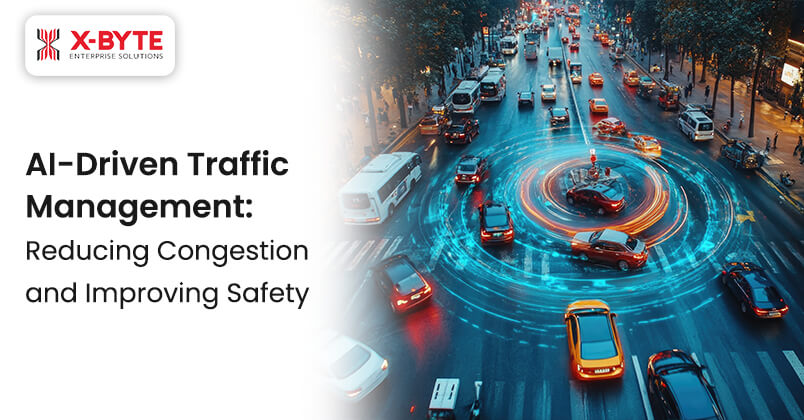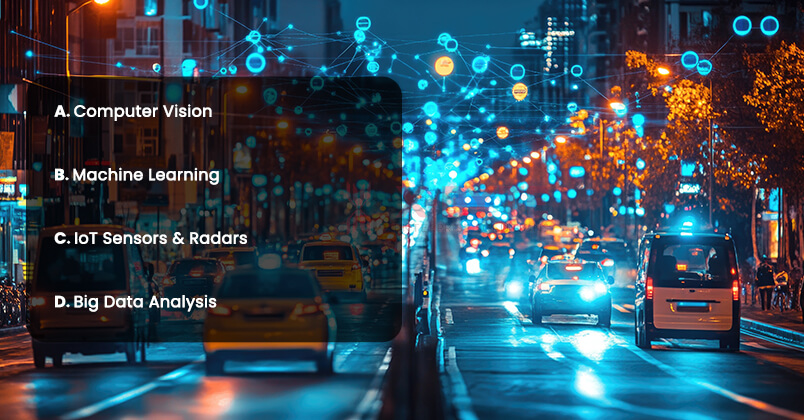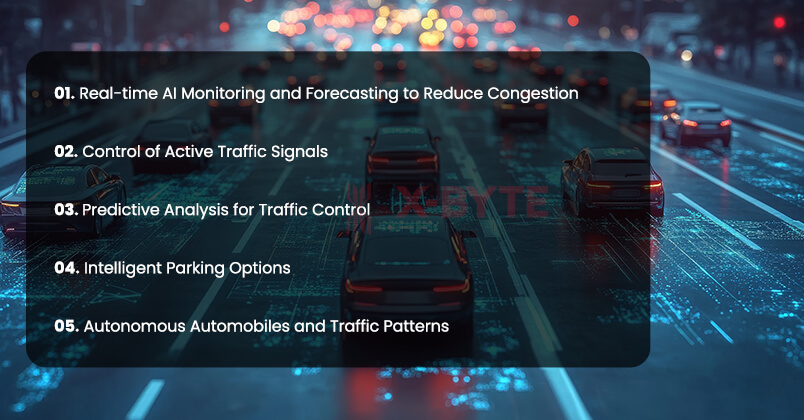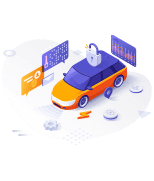-
solutinos
-
Hire
Frontend Developer
Backend Developer
-
NodeJS Developer
-
Java Developer
-
Django Developer
-
Spring Boot Developer
-
Python Developer
-
Golang Developer
-
Ruby on Rails Developer
-
Laravel Developer
-
.NET Developer
Technology
-
Flutter Developer
-
React Native Developer
-
Xamarin Developer
-
Kotlin Developer
-
Cross-Platform Developer
-
Swift Developer
-
MongoDB Developer
-
C Developer
-
Smart Contract Developers
Cloud
-
-
Services
Mobile Development
Web Development
- Work
-
Multi Services App
-
Food Delivery App
-
Grocery Delivery App
-
Taxi Cab Booking App
-
Multi Services App
-
OTT Platform APP
-
Social Media APP
-
Freelance Service App
-
Car Rental App
-
Medicine Delivery App
-
Liquor Delivery App
-
Sports Betting App
-
Online Coupon App
-
eLearning App
-
Logistics & Transportation App
-
Courier Delivery App
-
On-Demand Real Estate App
-
E-Wallet APP
-
Online Dating App
-
Handyman Services App
-
-
Process
-
Company

Quick Summary : AI in traffic management reduces traffic congestion woes, keeps traffic flow uninterrupted, and also helps in swift parking even in busy areas. AI coupled with new-age techs like IoT, computer vision, smart sensors, big data analytics, and machine learning can not only solve traffic congestion and safety issues but also assist in reducing emissions. AI-driven traffic control systems can suggest real-time solutions, and implement proactive measures for commuter safety.
In bustling urban centers and sprawling suburbs, traffic congestion isn't just an inconvenience—it's a persistent challenge that impacts daily life, productivity, and commuter health. The relentless ebb and flow of city traffic often leaves commuters on edge and safety compromised. This is where AI-driven traffic management is required. AI combines tech like IoT sensors & computer vision to detect vehicle motions, machine learning algorithms to learn traffic patterns, and data analytics to understand traffic issues to create solutions that reduce congestion and improve traffic conditions.
In this blog, we will understand all the aspects associated with AI traffic management in detail–from why it is needed, and what benefits it brings to exploring real-life case studies.
The Need For AI-Driven Traffic Management
It's true that traffic congestion is a form of inconvenience for vehicles and pedestrians, but there’s more to it. Standing long hours in traffic takes a toll on mental health and quality of life. People get anxious and stressed while navigating through congested roads.
Urban commuters in the USA wasted around 43 hours per year stuck in traffic in 2023. These wasted work hours have an economic value attached to them.
Apart from the economic impact, environmental consequences have also surfaced with the emission of greenhouse gases and pollutants being the major cause behind climate change and toxifying air quality. Vehicles that remain stationed in long-running traffic can significantly cause environmental and social impacts due to carbon emissions.
Traffic accidents are unarguably the prominent cause of death on a global level. A report by WHO states that approximately 1.19 million people die each year due to road traffic crashes.
Intersections can be depicted as the hotspots for accidents, certainly because vehicles, pedlers, and cyclists have to manage in limited space. Furthermore, inadequately designed infrastructure coupled with outdated traffic management can worsen the condition.
From the above discussion, it can be deduced that traffic management systems that depend on static schedules and manual supervision are not sufficient for functional traffic management.
The traditional traffic management systems are running out of potential to handle the dynamic nature of urban traffic, hence innovation like Artificial intelligence became essential.
AI has fixed flaws in almost every sector and traffic management is no exception. AI identifies patterns from collected traffic data and generates improvement suggestions based on analytics competencies. If smart cities and governments switch to AI traffic safety management systems like sensors, GPS, traffic detection, and traffic light signaling, the coming generation will not know what long-hour standing in traffic feels like.
AI Traffic Management Coupled With Smart Technologies

Computer Vision
Computer vision is a way of monitoring and analyzing traffic conditions through audial and visual data collected from the environment. Its key applications can include :
Traffic Monitoring: Through cameras that are installed everywhere along the streets, traffic flow can be monitored by detecting the count of vehicles, pedestrians, and cyclists using the roads. Most Certainly, this data assists in determining congestion levels and creating strategies that could reduce them.
Pedestrian and Cyclist Safety: Along with vehicles like cars and buses, it is also important to ensure the safety of cyclists and pedestrians. Therefore, computer vision can be used to ensure traffic signals are prioritizing their safety.
UK's AI Traffic Lights for Cyclists
In an attempt to encourage mobility UK municipality has come forth with a traffic light system that gives more priority to cyclists. This was made possible by utilizing AI-powered sensors that detect approaching cyclists and adjust signal timing to favor them. This means while cyclists are given a green light, motorists have to wait longer in a red light.
License Plate Recognition: The process of automated license plate recognition ( ALPR) is enabled through computer vision, improving toll collection, and parking management-related law enforcement.
Object Detection and Recognition: Information related to objects found on roads like vehicles, pedestrians, and road signs are recorded. This practice is necessary to recognize violations like running red lights, and high speeding and take action subsequently. This thoroughly helps in ensuring that traffic rules are followed by commuters.
Accident detection: Computer vision has made it possible to identify accidents, stalled vehicles, or debris on the road, all in real-time. This facilitates quick responses from the emergency services, faster road clearance, and prevention of secondary accidents (accidents that occur as roads are blocked due to a prior accident).
Accelerate your journey toward smarter urban planning with intelligent AI/ML-powered traffic management solutions!
Machine Learning
Machine learning in traffic management can change the course of traditional operations. Because ML processes like the identification of patterns, predictions and decision-making can happen without being explicitly programmed for it. Let's dive into how ML’s features are applied in traffic management:
Traffic Pattern Analysis: ML can analyze historical and real-time data to identify patterns such as peak traffic hours, congestion points, and accident-prone areas. This information is useful in predicting future traffic conditions and optimizing traffic flow subsequently.
AI-based traffic prediction tools: Factors like weather, road conditions, and special events that are responsible for traffic congestion can be recognized by Machine learning. For example, if a major concert or sports event is scheduled, the system confers increased traffic and adjusts signal timings or suggests alternative routes.
Route Optimization: ML can lead you through efficient routes, created by taking reports from real-time traffic data, ensuring routes with fewer obstacles and stoppages are devised for users.
Anomaly Detection: Machine learning can detect unusual events, such as accidents, road closures, or erratic driver behavior, and alert authorities or drivers to take appropriate action.
IoT Sensors & Radars
The deployment of sophisticated sensors to collect environmental data is known as sensory vision. IoT-enabled Sensory vision technologies give AI traffic management systems, the raw data they need to make conclusions.
LiDAR: LiDAR (Light Detecttion and sensing) uses a remote sensing technology that uses laser pulses to measure distances and create 3-D models. These have helped increase the visibility of cars, pedestrians, and obstructions even in low light.
Radar: Using Radar sensors, distances between distinct objects can be identified to prevent accidents or near misses.
Infrared Sensors: Infrared sensors can be used to identify heat signatures. Their characteristics make them appropriate for nighttime or bad weather traffic monitoring.
Acoustic Sensors: Issues with screeching tires have also become a part of AI detection of collisions or moving offenses.
IoT: IoT devices & sensors positioned on roads, bridges, and automobiles use interconnected devices like cameras to monitor real traffic conditions, temperature, and humidity. Many IoT app development company have made its implementation successful in vehicles.
Big Data Analysis
To put it simply, data analysis is the act of looking at, refining and analyzing data to provide insightful conclusions. Data analysis can be used to examine large volumes of data from multiple sources to make well-informed decisions when it comes to AI-driven traffic management.
Among the important uses are:
Traffic Simulation: Models that forecast the effects of modifications, such as new road layouts, traffic light timings, or public transportation routes, are developed using data analysis. Cities can test and improve their traffic management strategies with the aid of these simulators.
Performance metrics: Key performance measures, including average travel times, traffic levels, and accident rates, are monitored using data analysis tools. These indicators are employed to assess the success of traffic control plans and pinpoint regions in need of development.
Integration with Other Systems: Public transit, emergency services, and energy grids are just a few examples of urban infrastructure that can be integrated with traffic management systems through data analysis. Coordination and overall efficiency are enhanced by this strategy.
Applications of AI-Powered Traffic Management

Real-time AI Monitoring and Forecasting to Reduce Congestion
The most advantageous side of AI is its ability to process large data in real time. This quality is a must in a traffic management system where traffic condition monitoring is essential. Collection of data like, the number of vehicles, their driving speed, traffic density, etc are processed using GPS devices. Through this data, AI depicts patterns to make predictions. Examples of patterns may include trends during rush hour, recognizing accidental spots, and analyzing which introspection has the heaviest traffic. Through this, traffic management can anticipate traffic even before it happens and also suggest different routes.
For instance, Thailand’s Phuket is set to deploy AI systems to reduce congestion issues in Phuket.
“Currently, Phuket’s traffic congestion is frustrating for tourists. However, in the next three to four years, we expect smoother traffic flow,” said Governor of Phuket, Sophon.
If an AI-operated unit has identified slow-moving traffic, the algorithm will signal traffic lights to release congestion. Not only does this stop delays, but it also reduces the possibility of secondary collisions that can happen due to any possible reason.
Control of Active Traffic Signals
Traditional traffic signals occasionally fall short in promoting traffic density instability because they operate according to set timetables. AI-powered traffic signals, on the other hand, can adjust to situations that change in real-time. These are believed to be more effective at maximizing signal timing to provide a smooth traffic flow, cutting down on hazardous emissions and idle time.
Let us consider Pittsburgh as an example. Here, the efficacy of AI-powered traffic signals has already been shown. This has resulted in significant fuel savings and a reduction in emissions. Scalable Urba traffic control system (SURTRAC) is a decentralized adaptive system in which each intersection commutes independently. By optimizing traffic flow at crossings using real-time data, this technology lowers emissions and trip times. In Pittsburgh led to a 40% reduction in waiting time and a 25% reduction in travel time. This proved how effective AI is at managing traffic in cities.
Predictive Analysis for Traffic Control
Environmental factors, human mistakes, and occasionally inadequate infrastructure are the main causes of traffic accidents. Existing methods are only able to develop actions to stop accidents from happening in the first place after they have already happened.
Authorities in charge of traffic management might implement specific safety measures to reduce possible hazards when they have been identified. These actions could consist of:
- Installing More Signs: To alert drivers to possible hazards, authorities can erect warning signs or speed restriction signs in locations where there is a potential risk.
- Constructing durable roads: AI can be utilized for recognizing infrastructure improvements including expansions, traffic light additions, or placement of barricades in high accident areas.
- Increased presence of police: Employment of law enforcement at places where there is a high possibility of traffic violations and accidents is needed, coupled with AI supervision.
- Implementing Speed restrictions: In response to the occurrence of ice or wet road conditions, AI can be instantly used to modify speed limitations.
Intelligent Parking Options
Finding the ideal parking space takes a lot of time when driving to busy locations. In addition to being time-consuming, it exacerbates traffic congestion, which makes the issue worse. Through smartphone apps or in-car navigation systems, sophisticated AI can give drivers the most recent information by tracking parking occupancy.

Need an intuitive in-car navigation app to solve parking woes?
Contact Us Know! Contact Us Know!Automated payment systems can also be integrated with some smart parking solutions. This eliminates the need for real parking meters and simplest the parking process by enabling payment via contactless methods or mobile apps. Reduced time in parking with faster payment also goes a long way to reduce congestion.
Autonomous Automobiles and Traffic Patterns
Artificial Intelligence (AI) is used in autonomous cars to make judgments in real time, traverse roadways, and interact with other cars. Sensors and cameras gather information from their environment and make decisions instantly. The AI systems are programmed to recognize trends, predict driver behavior, and plot complex traffic situations.
If the autonomous vehicle system is harmonized with traffic signals, it can reduce unnecessary brakes and constant changes in speeds, and bring improvement in traffic flow and transportation network. In the coming generation congestion and safety will reach maximum value if fleets of AVs work together to create an efficient transportation system.
In Sydney, NSW smart shuttle which is an AV was used for trials. Initially, it operated on private roads which afterward extended to offer trips to the public around Olympic Park’s commercial and residential area. Safety and congestion were improved when autonomous vehicles were included in Sydney's traffic infrastructure. This majority emphasized AI's potential for handling intricate urban traffic.
Challenges Associated with AI-Driven Integration Traffic Management
System Reliability and Public Trust: Implementation of AI systems will only be validated if it proves to be dependable and safe to use. If somehow it stops working properly or the system breaks down, people can lose faith very quickly. So it's important to develop trustable AI ML development services that can be trusted by coming generations.
Lack of Skilled AI technicians: In spite of having developed a full-fledged plan for AI and its integration into traffic management, we still lack people who are actually skilled to bring these to life. Due to the shortage, it can be expected that it will take much longer to bring theoretical AI transportation than it should.
Regulatory and Ethical Consideration: As technical advancements like AI come to light, easier it becomes for both benefits and misuse to take place. Therefore there needs to be rules and regulations that address ethical concerns.
Technological Limitations: There are certain technological limitations like reliance on data accuracy, potential algorithm bias, the need for continuous refinement, and the cost of implementation and updates that need to be addressed.
All the above challenges can be addressed by partnering with experienced AI/ML service providers. Through strategic planning, skilled expertise, and ethical practices, we can capitalize on AI to transform traffic management. An AI-driven transportation future is achievable through proper collaboration with a reputed AI development agency.
Future of Smart Cities: AI/ML-Based Traffic Solutions
Traffic congestion is an issue for almost every urban municipality, state, and metro city. Even 99% of traditional traffic management is based on traffic lights. As we look towards the future of urban development, AI and machine learning in traffic management are becoming crucial for smart cities. AI algorithms will predict traffic patterns by analyzing historical data and real-time inputs for proactive traffic management. AI will integrate various transport modes, suggesting optimal combinations of walking, biking, transit, and ride-sharing based on real-time conditions. Machine learning will further help design efficient city layouts by simulating scenarios for the optimal placement of roads and transit routes.
AI will further help in implementing smart traffic signals across the city. For instance, Artificial Traffic Surveillance and Control (ATSAC) uses real-time detector loops between and at intersections, changing signal timing as traffic conditions change.
Vehicles will communicate with urban infrastructure, allowing AI to make real-time adjustments to traffic signals and routes.
AI will prioritize environmentally conscious traffic management through emission reduction and smart charging stations. For instance, in 2024, the city of Boston partnered with Google’s project Green Light. This research initiative analyses traffic patterns and recommends suggestions for traffic optimization. This implication has led to a 10 % decrease in emissions.
With time, AI will also coordinate mixed traffic of human-driven and self-driving vehicles. Public transit will become more responsive with dynamic routing and predictive maintenance.
Wrapping Up
There’s no limitation to the future scope associated with AI-driven traffic management to reduce congestion. Groundbreaking AI technologies like machine learning, predictive analysis, computer vision, and sensory devices have emerged as better replacements for traditional methods of traffic management. From traffic signaling, and predicting possible accidents to navigating routes and being an integral part of autonomous vehicles, AI has improved every aspect of traffic management.
Companies looking for trusted AI/ML solutions development services can connect with experts at X-Byte Solutions to get goal-oriented results for their business. We deliver solutions that produce positive and stable results.
Want to connect automotive with IoT sensors and get real-time data for traffic analytics? Get our IoT app development solutions and accelerate your journey toward smart traffic movements.
